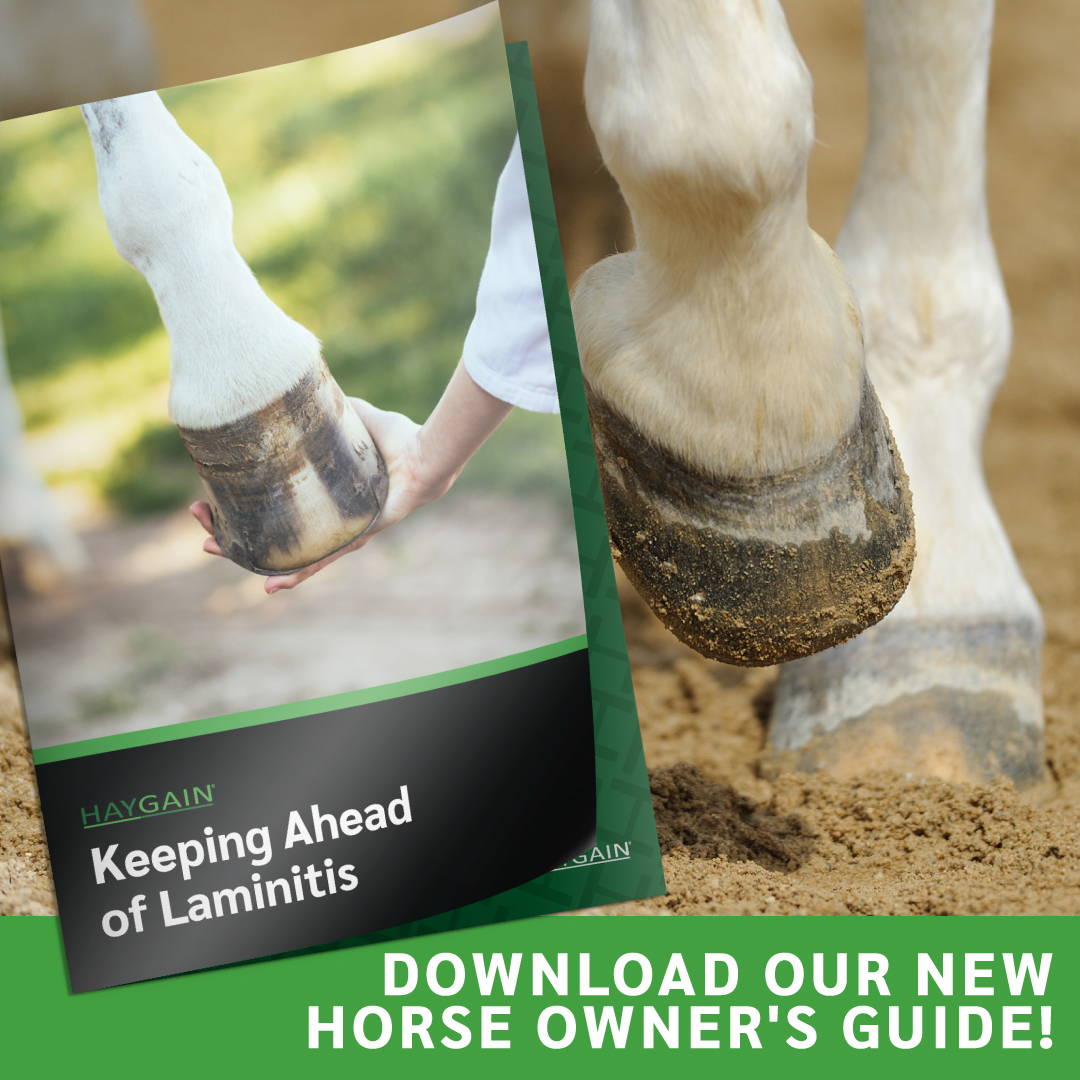Horse Owner's Guide: Laminitis Part 1
Laminitis is a condition that strikes fear into our horse-owning hearts.
And for good reason.
Whether it occurs seemingly overnight or emerges after creeping up over many months, this devastating hoof disease can ruin an equine career and, in some cases, end a beloved horse’s life.
As with every aspect of our horse’s health, knowledge is power. Toward that end, Haygain’s Horse Owners Guide to Laminitis provides a thorough understanding of this condition and advice on how to recognize it, manage it and, best of all, prevent it.
Some of our horses are lucky enough to live outdoors full time and have amp.
The Hoof is a Complex Structure
We may think we know our horses’ hooves well. We diligently pick out debris from the grooves of their frog, examine the sole for foul odors that might indicate other diseases and monitor hoof growth to determine ideal shoeing or trimming schedules.
Our horses’ hooves are remarkably complex structures. The inner foot functions through biomechanical interactions of multiple bones and soft, sensitive structures, the Horse Owners Guide explains. Ligaments, tendons, cartilage, nerves and a network of valveless blood vessels all work together to help our horses absorb the impact when their hoof hits the ground – in recreational exercise, coming down off a big jump, sliding to a dramatic stop in reining competition or navigating uneven terrain out on trail.
Or, That’s How Things Work in a Healthy Hoof.
Laminitis affects an especially critical and vulnerable part of the hoof’s internal interactions: the suspensory apparatus of the distal phalanx. This consists of an entire square meter of interlocking connective tissue that binds the foot’s main bone, the coffin bone, in suspension parallel to the hoof wall.
The suspensory apparatus’ structure is made up of lamellae that dampens about 67% of the vibrations involved in absorbing the shock of impact. A precise amount of tension is needed within the laminae to keep all the hoof parts, especially the coffin bone, in the right place.
Laminitis occurs when the laminae is compromised by extreme weight bearing, illness or metabolic issues. It’s the result of the laminae weakening and overstretching. This allows the coffin bone and the hoof wall to separate too much. Without the perfect tension suspending it, the coffin bone responds to horse’s movement or gravity and drops down or rotates toward the ground.
That’s when the pain begins.
However quickly it progresses, laminitis becomes extremely painful for the horse. Foot soreness and short stridedness are early signs of slow-developing cases. Reluctance to move and adopting a backward-slanting stance to relieve pain on the front of the hoof are characteristic of severe lameness cases. Laminitic horses also tend to lie down a lot because it hurts to be on their feet.
Prevention Through Diet
Approximately 90% of cases are caused bymetabolic issues – “the way horses’ hormones respond to sugars in their feed,grass, and hay,” the Horse Owners Guide explains. The good news here isthat careful feeding and weight management can keep these metabolic issuesunder control. Unlike laminitis cases caused by an injury or illness, there’s alot we can do to reduce the risk of our horses getting this disease.
Find out more about this complicatedcondition by signing up to receive Haygain’s Horse Owners Guide to Laminitis.Whether you are already dealing with laminitis or want to prevent it, the Guideis packed with deep knowledge and advice on management and prevention.
And, it’s a free addition to your library of horse owner knowledge.





















